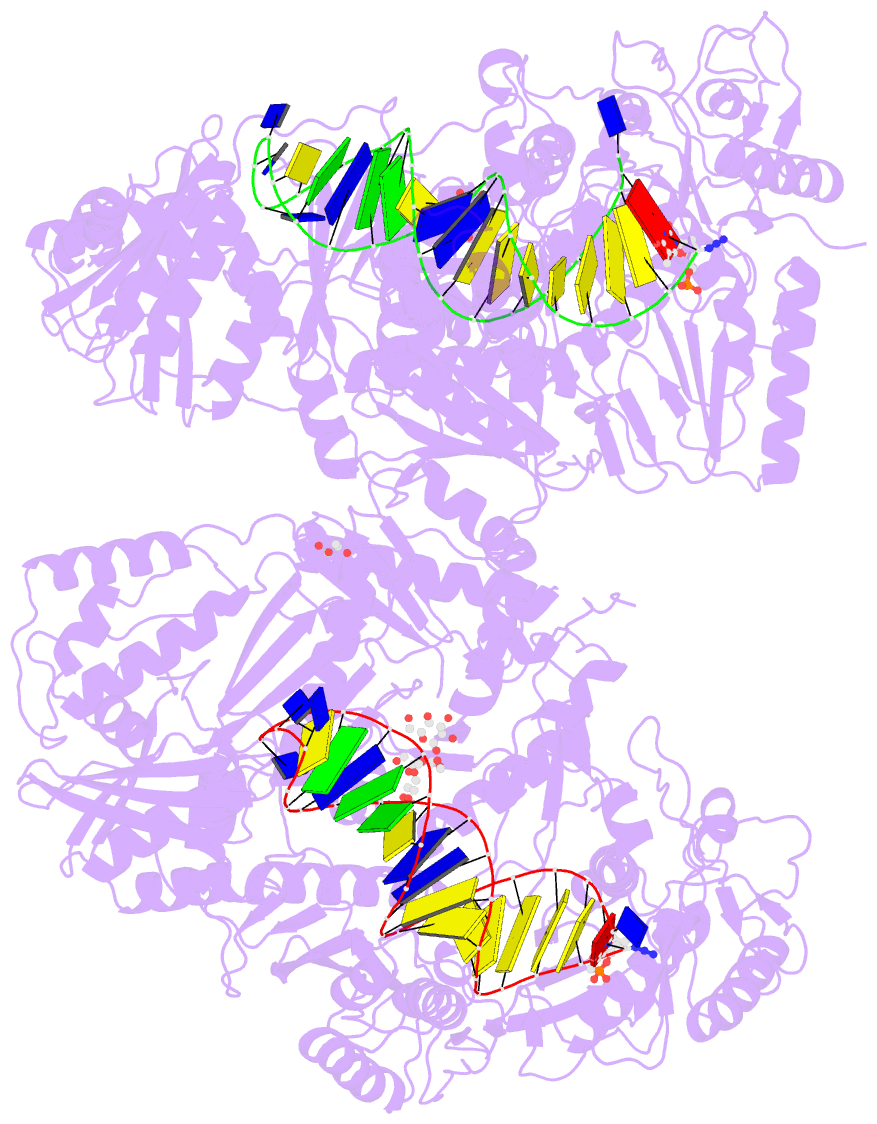Summary information and primary citation
- PDB-id
- 5i3u; DSSR-derived features in text and JSON formats
- Class
- transferase-DNA
- Method
- X-ray (3.0 Å)
- Summary
- Structure of hiv-1 reverse transcriptase n-site complex; catalytic incorporation of aztmp to a DNA aptamer in crystal
- Reference
- Das K, Balzarini J, Miller MT, Maguire AR, DeStefano JJ, Arnold E (2016): "Conformational States of HIV-1 Reverse Transcriptase for Nucleotide Incorporation vs Pyrophosphorolysis-Binding of Foscarnet." Acs Chem.Biol., 11, 2158-2164. doi: 10.1021/acschembio.6b00187.
- Abstract
- HIV-1 reverse transcriptase (RT) catalytically incorporates individual nucleotides into a viral DNA strand complementing an RNA or DNA template strand; the polymerase active site of RT adopts multiple conformational and structural states while performing this task. The states associated are dNTP binding at the N site, catalytic incorporation of a nucleotide, release of a pyrophosphate, and translocation of the primer 3'-end to the P site. Structural characterization of each of these states may help in understanding the molecular mechanisms of drug activity and resistance, and in developing new RT inhibitors. Using a 38-mer DNA template-primer aptamer as the substrate mimic, we crystallized an RT/dsDNA complex that is catalytically active, yet translocation-incompetent in crystals. The ability of RT to perform dNTP binding and incorporation in crystals permitted obtaining a series of structures - (I) RT/DNA (P-site), (II) RT/DNA/AZTTP ternary, (III) RT/AZT-terminated DNA (N-site), and (IV) RT/AZT-terminated DNA (N-site)/foscarnet complexes. The stable N-site complex permitted binding of foscarnet as a pyrophosphate mimic. The Mg2+ ions dissociated after catalytic addition of AZTMP in the pre-translocated structure III, whereas ions A and B had reentered the active site to bind foscarnet in structure IV. The binding of foscarnet involves chelation with the Mg2+(B) ion and interactions with K65 and R72. Analysis of interactions of foscarnet and the recently discovered nucleotide-competing RT inhibitor (NcRTI) α-T-CNP in two different conformational states of the enzyme provide insights for developing new classes of polymerase active site RT inhibitors.





